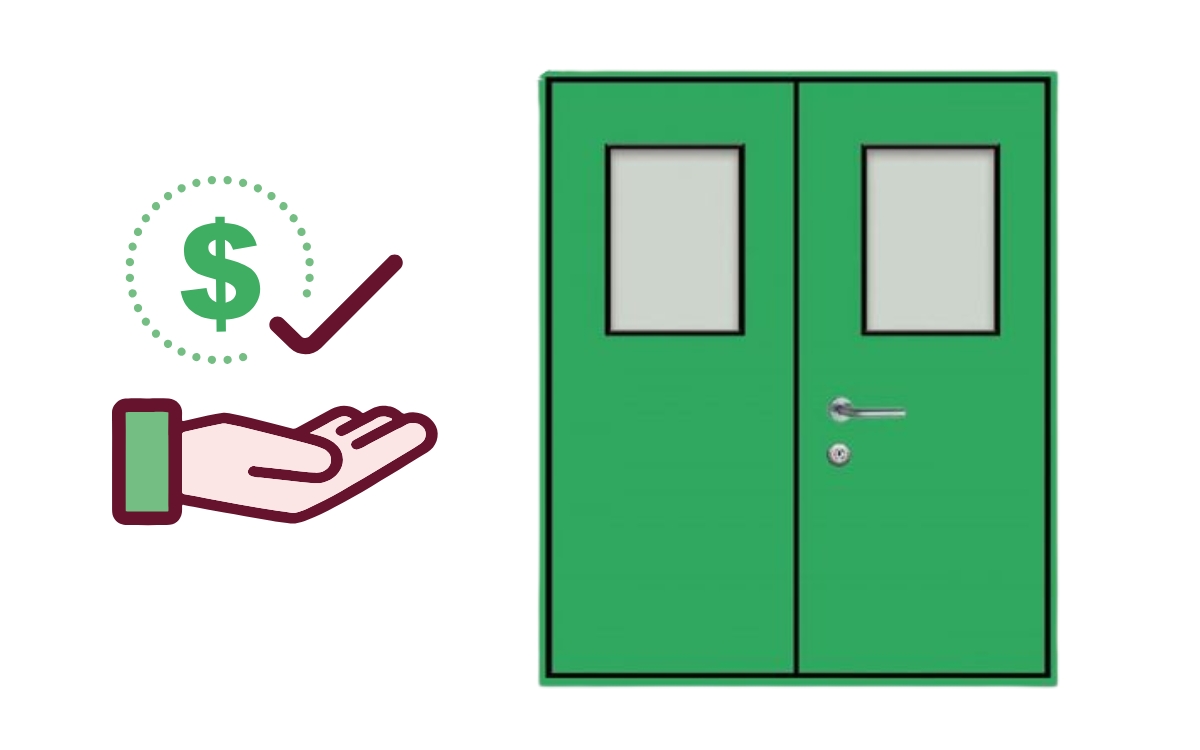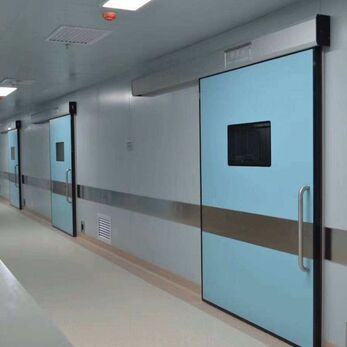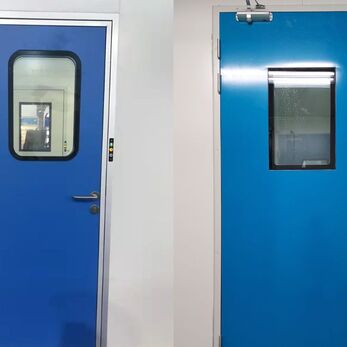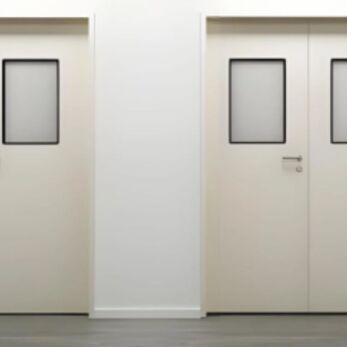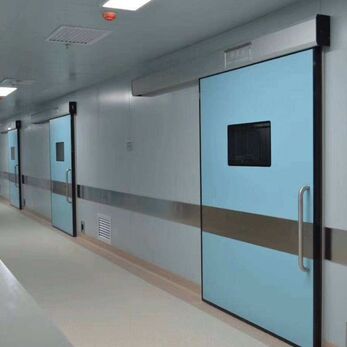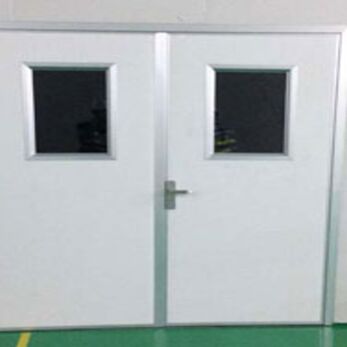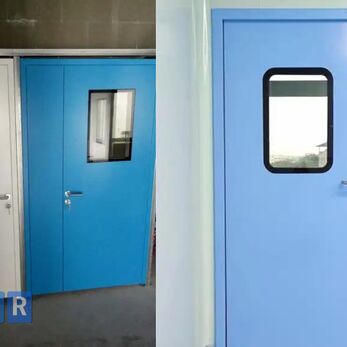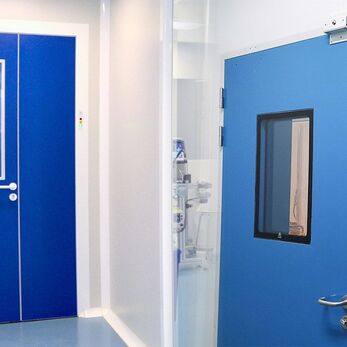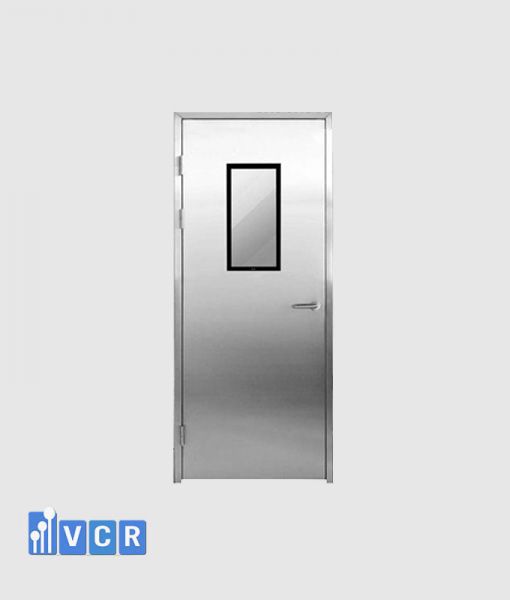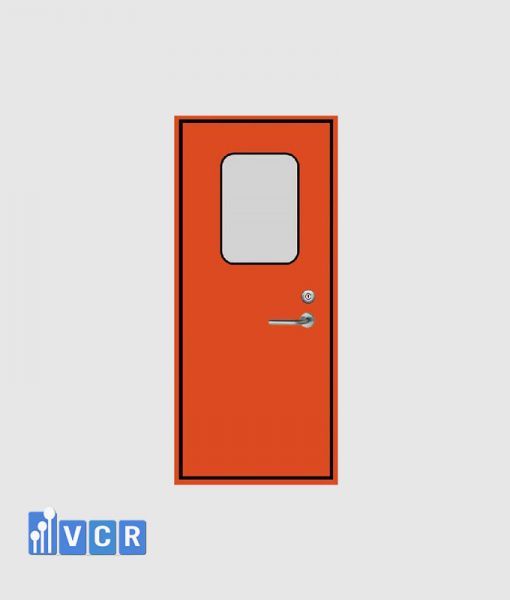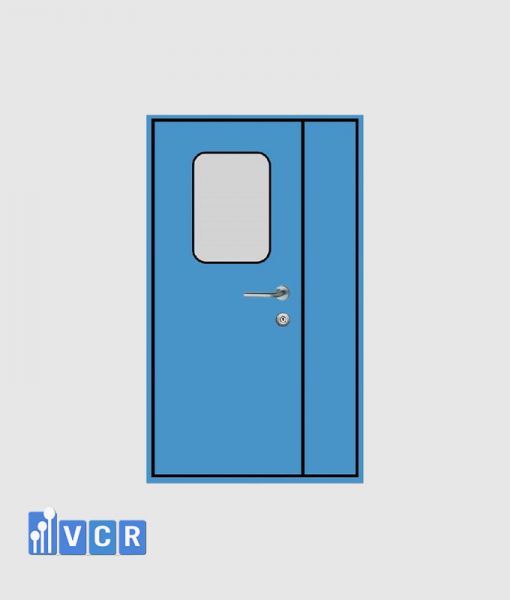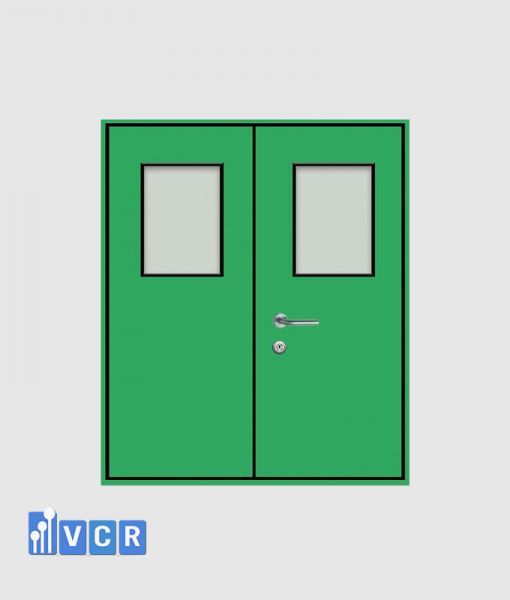In electronic component manufacturing factories, clean room doors play an important role in maintaining pressure, preventing fine dust, controlling static electricity and limiting cross-contamination between areas. If you are interested in the price of clean room doors, the article below will provide the latest price list for each type of door.
- 1. Overview of the Role of Cleanroom Doors in Electronics Manufacturing Plants
- 2. Common Types of Cleanroom Doors in the Electronics Industry
- 3. Comparison of Cleanroom Door Types & Pricing (Updated 2025)
- 4. Factors Influencing Cleanroom Door Pricing in Electronics Plants
- 5. Key Considerations When Choosing Cleanroom Doors for Electronics Manufacturing
- 6. Frequently Asked Questions (FAQ) - Cleanroom Doors for Electronics
- 7. Get a Free Quotation & Technical Consultation from VCR Experts
1. Overview of the Role of Cleanroom Doors in Electronics Manufacturing Plants
In electronics manufacturing facilities, controlling the production environment is not only a requirement for ISO compliance but also a key factor in ensuring product quality. One of the essential components of the cleanroom system is the cleanroom door—responsible for managing the movement of personnel and materials, maintaining pressure levels, and preventing cross-contamination between functional areas.
Key Functions of Cleanroom Doors:
- Cross-contamination and dust control: Cleanroom doors prevent dust, particulates, and moisture from entering controlled areas, especially during personnel or material transfers.
- Maintaining pressure differentials: Doors act as part of the pressure control system (positive/negative pressure), helping to stabilize room-to-room differentials and reduce the risk of contaminated airflow.
- Electrostatic discharge (ESD) prevention: Since electronics manufacturing is highly sensitive to ESD, doors made from anti-static materials such as ESD glass or anti-static coatings are crucial for protecting circuit boards and sensitive components.
- Interlock system integration: Interlocked doors ensure that only one door opens at a time, limiting uncontrolled air exchange—especially important in high-grade clean zones.
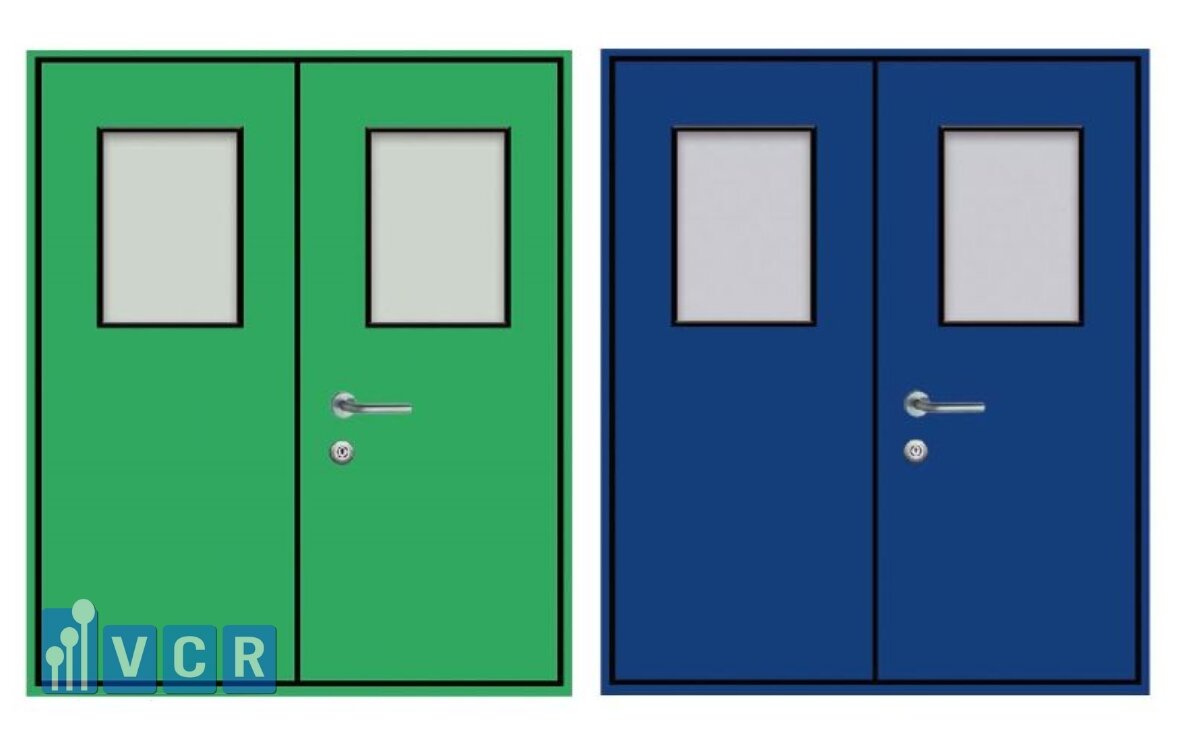
Typical Application Areas for Cleanroom Doors in Electronics Plants:
- SMT (Surface Mount Technology) rooms: Require strict dust and ESD control to protect PCBs.
- Testing and quality control rooms: Require near-sterile environments with airtight, transparent doors for visibility.
- Component and finished goods storage: Demand well-defined traffic flow and controlled material transfer.
- Personnel gowning rooms - airlocks: Must be equipped with interlocked or airshower-integrated doors to ensure contamination control.
Given their critical role, selecting the right cleanroom door for each functional zone is a fundamental step in achieving ISO 14644 compliance and ensuring high-standard electronics production.
2. Common Types of Cleanroom Doors in the Electronics Industry
Selecting the right type of cleanroom door for each functional area helps optimize operations while minimizing long-term maintenance costs. Below are the most commonly used door types in modern electronics manufacturing:
Panel Cleanroom Doors (Single or Double Leaf)
- Construction: Made from insulated panel (EPS/PU) cores with aluminum or stainless steel frames. Reinforced with honeycomb or foam for strength and acoustic insulation.
- Application: Ideal for low-traffic areas like gowning rooms, airlocks, and component storage.
- Advantages:
- Lightweight and easy to install
- Cost-effective
- Compatible with interlock and pressure control systems
Tip: Double-leaf panel doors are recommended for zones with trolley or pallet traffic.
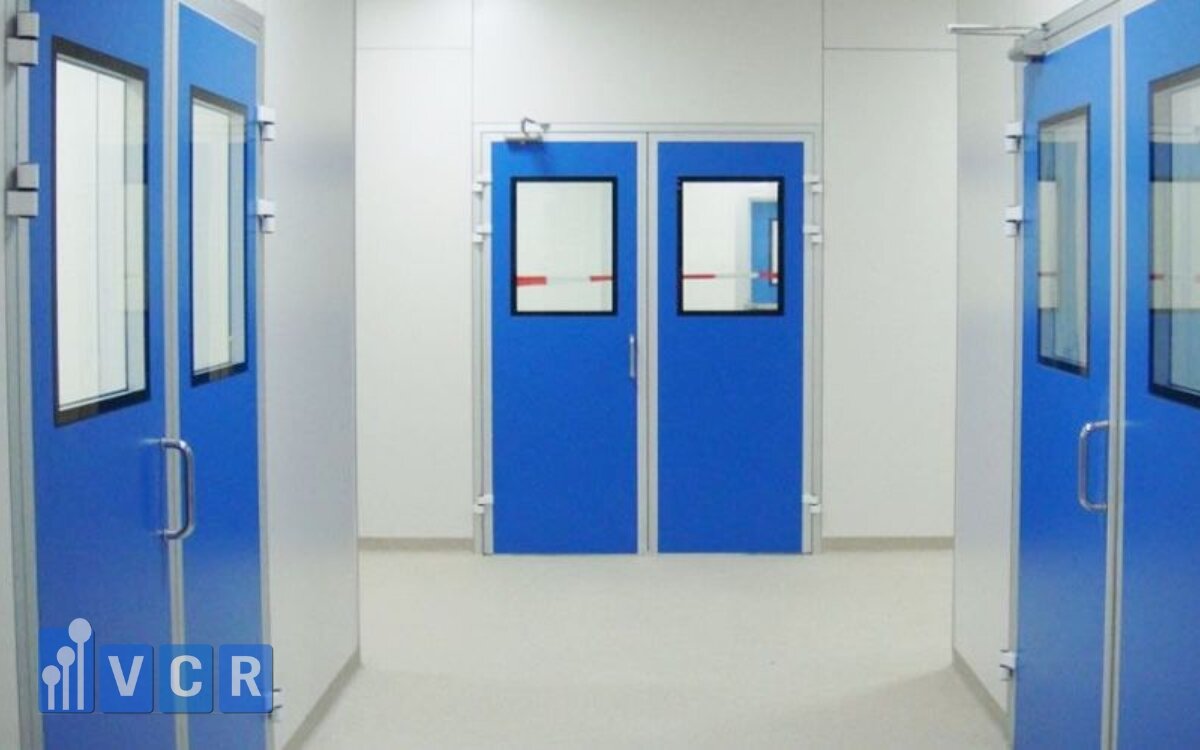
Anti-Static Glass Doors (ESD Doors)
- Construction: Tempered glass with an ESD conductive coating, framed with aluminum or powder-coated steel. Equipped with silicone seals and stainless steel push handles.
- Application: SMT rooms, testing areas, and QC zones that require visibility and ESD protection.
- Advantages:
- Dissipates static charges, protecting PCBs and ICs
- Offers visibility to avoid accidental collisions
- Sleek, modern appearance
Note: Proper grounding must be ensured for full ESD protection.
Powder-Coated Steel Doors
- Construction: Galvanized steel with anti-bacterial powder coating, stainless steel hinges, D-type handle, and optional interlock-compatible lock.
- Application: High-security areas, pressure-intensive zones, and rooms with a risk of mechanical impact (technical rooms, compressed air zones).
- Advantages:
- Strong and impact-resistant
- Scratch-resistant and easy to maintain
- Suitable for demanding environments
Optional vision panels can be added for convenience and safety.
Automatic Sensor Doors with Interlock
- Construction: Operated via electric motor and radar/infrared sensors. Panels can be glass or insulated, with aluminum or stainless frames. Integrates easily with access control systems and electromagnetic locks.
- Application: High-traffic zones like corridors, warehouses, airshowers, and material transfer rooms.
- Advantages:
- Hands-free operation - ideal for hygienic zones
- Minimizes contamination during frequent entry/exit
- Compatible with multi-door interlock systems
Best suited for modern electronics facilities aiming for ISO Class 6-7 compliance.
See more: Why Automatic Doors are the Superior Choice for Pharmaceutical Cleanrooms
3. Comparison of Cleanroom Door Types & Pricing (Updated 2025)
Choosing the right cleanroom door involves not only technical considerations but also budget management. The following comparison table offers an overview to help you make the best decision:
Comparison Table - Cleanroom Door Types for Electronics Industry (2025)
|
Door Type |
Main Materials |
Typical Applications |
Key Advantages |
Estimated Price (VND) |
|
Single-Leaf Panel Door |
EPS/PU Panel + Aluminum or Stainless Steel Frame |
Gowning room, airlock, component storage |
Lightweight, budget-friendly, easy to install |
3,500,000 - 5,500,000 / leaf |
|
Double-Leaf Panel Door |
Panel + Aluminum Framing System |
Packing area, trolley-access zones |
Wider clearance, suited for material handling |
6,000,000 - 8,500,000 / set |
|
ESD Glass Door |
ESD Tempered Glass + Aluminum Frame |
SMT room, QC/testing areas |
Anti-static, clear view, modern and sleek |
6,500,000 - 9,000,000 / leaf |
|
Powder-Coated Steel Door |
Galvanized Steel + Anti-bacterial Coating |
High-pressure rooms, technical or clean air rooms |
High durability, scratch resistance, strong seal |
4,800,000 - 7,200,000 / leaf |
|
Automatic Sensor Door |
Glass or Panel + Motor + Radar/IR Sensor |
Corridors, airshower, material transfer zone |
Hands-free, interlock-compatible, high hygiene compliance |
12,000,000 - 25,000,000 / set |
Notes:
- Prices are for reference only and may vary depending on door size, material grade, accessories, and required cleanroom standards.
- Optional features like magnetic locks, access control systems, and radar sensors are priced separately.
- VCR offers volume discounts and free on-site consultation/design for project-based orders.
4. Factors Influencing Cleanroom Door Pricing in Electronics Plants
The total cost of a cleanroom door depends on more than just the model. Below are key technical and project-specific factors that impact final pricing:
1. Custom Size & Design Requirements
- Standard sizes (e.g., 900×2100mm, 1200×2100mm) are more economical due to batch production.
- Custom sizes (larger for pallet access, square doors, additional glass panels) may incur higher costs due to custom cutting and fabrication.
Tip: Opt for standard dimensions where possible to save on cost.
2. Material Type & Accessories Included
- Frame options: Aluminum profiles, stainless steel 304, powder-coated steel - priced differently depending on durability and corrosion resistance.
- Common accessories: Push handles, hinges, door closers, airtight gaskets, vision panels, magnetic or mechanical locks.
- Specialized options: ESD sensors, interlock controllers, HEPA-grade sealing gaskets can significantly increase pricing.
Note: Choose materials based on environmental factors (humidity, ESD, contamination risk) for long-term performance.
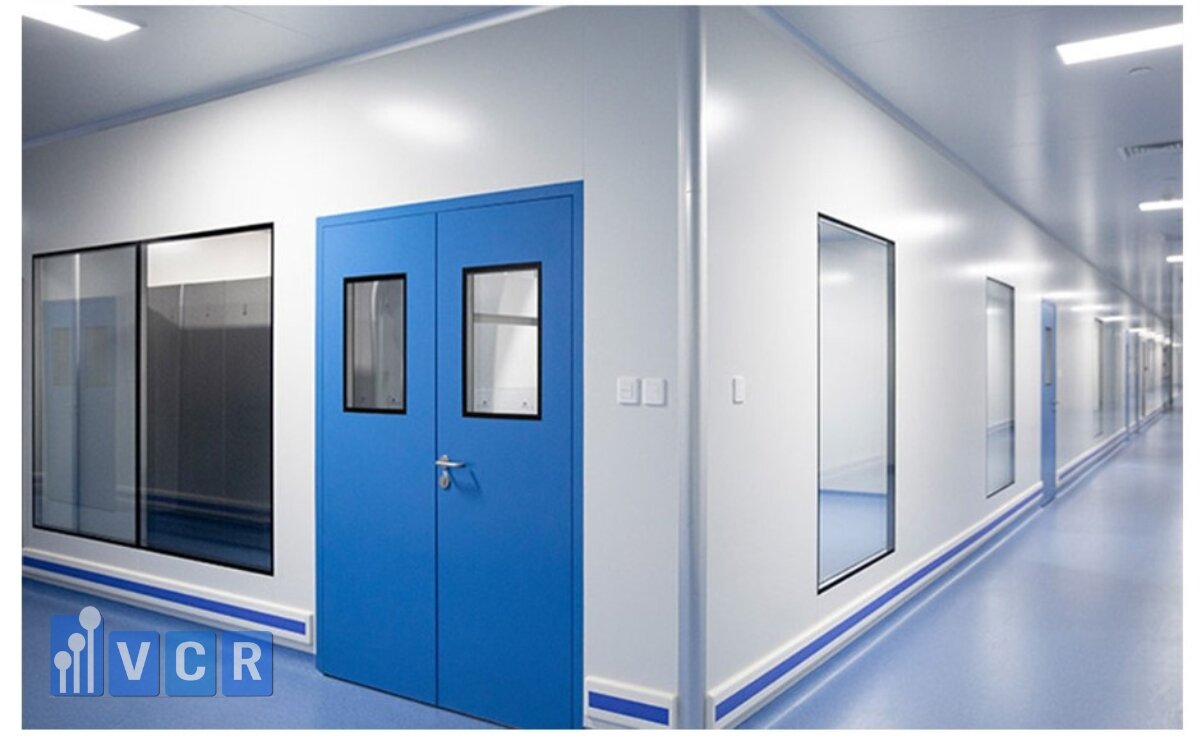
3. Cleanroom Standards Required (ISO Class 7-8)
- ISO Class 7 areas demand better sealing performance, often requiring dual gaskets, soft-close hinges, and precise pressure control.
- ISO Class 8 standards are more flexible but still require easy-to-clean, non-static surfaces.
Projects pursuing certifications (GMP, ISO 14644, ESD compliance) will require full technical documentation, drawings, and acceptance protocols—impacting total cost.
4. Integration with Interlock, Access Control & Pressure Sensors
- 2-door or 3-door interlocks are mandatory in airlocks, gowning rooms, and testing zones—only one door can open at a time.
- Add-ons like radar/IR sensors, magnetic locks, and card/code access control boost convenience but also cost.
- Pressure sensors allow automatic door response based on room pressure differential.
A fully automated cleanroom door with interlock and access control can cost 2-3 times more than a basic manual unit.
See more: Choose the right Cleanroom Door with 5 factors
5. Key Considerations When Choosing Cleanroom Doors for Electronics Manufacturing
Cleanroom doors serve not only as physical barriers between production areas but also play a vital role in environmental control, contamination prevention, and ensuring operations comply with ISO 14644 standards. Below are essential factors to help businesses choose the right door - for the right zone - at the right cost:
1. Choose the Right Door Type for Each Functional Area
- SMT & Product Testing Rooms:
- Use anti-static glass doors (ESD doors) for visibility and electrostatic discharge protection.
- Opt for models with stainless steel push handles, airtight gaskets, and interlock-ready locks.
- Gowning Rooms - Airlocks:
- Use panel doors or powder-coated steel doors integrated with interlock systems.
- Can be combined with airshower units or touchless sensor-based opening systems.
- Packaging Zones & Component Storage:
- Use double-leaf panel doors for trolley and pallet movement.
- Select models with bottom bolts and door closers to prevent long openings and dust ingress.
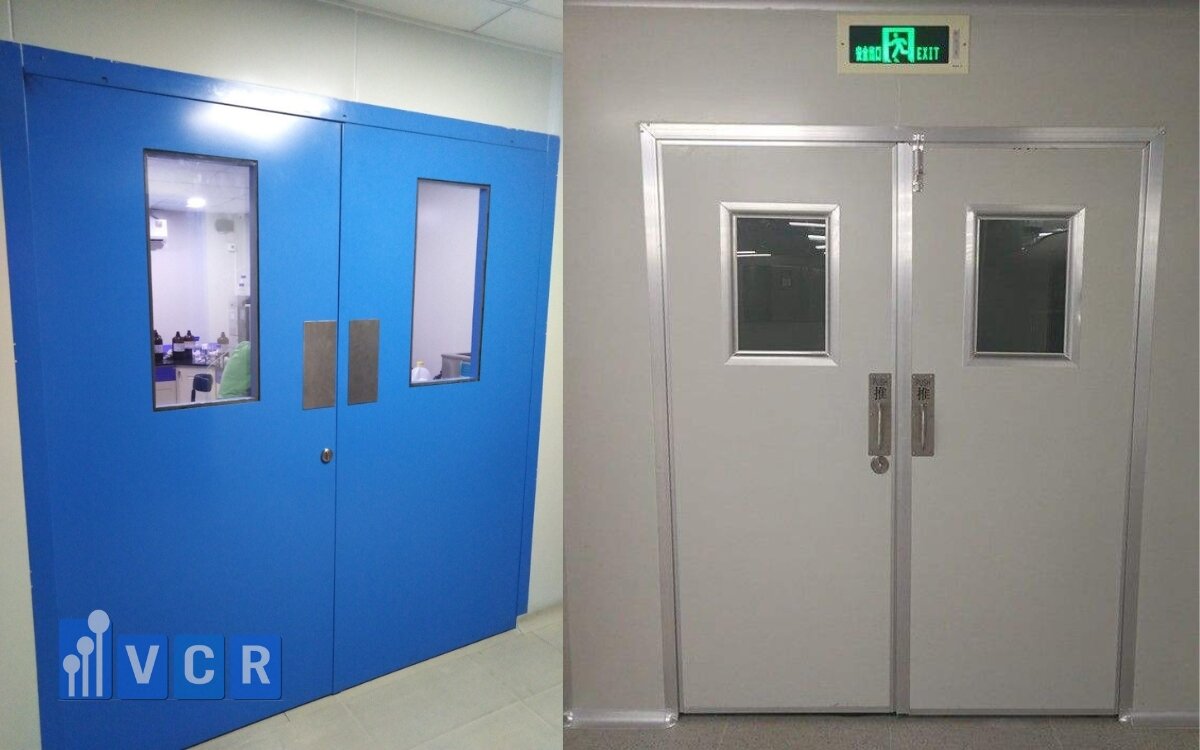
2. Prioritize Anti-Static & Easy-to-Clean Materials
- Anodized aluminum or stainless steel 304 frames resist corrosion and reduce dust accumulation.
- Smooth surfaces are easy to clean with IPA or cleanroom-approved chemicals.
- ESD glass must be properly grounded to function effectively.
Note: Some SMT zones require doors that comply with IEC 61340 ESD control standards.
3. Check Integration with Control Systems
Ensure the door can:
- Be integrated with magnetic locks, access card readers, pressure sensors.
- Connect with 2-door or 3-door interlock systems for airlocks and transition zones.
- Match your existing electrical layout and wiring schematics for accessories.
4. Consider Operating Procedures & Internal Standards
- If your factory follows ISO 9001, ISO 14644, IPC-A-610, the door must come with CO/CQ certificates, technical drawings, and user manuals.
- Choose a supplier offering site surveys, layout consultation, and post-installation maintenance.
See more: 10 Essential Precautions for Safe and Optimal Use of Cleanroom Automatic Doors
6. Frequently Asked Questions (FAQ) - Cleanroom Doors for Electronics
Which type of door is recommended for SMT zones?
SMT zones (Surface Mount Technology) are highly sensitive to electrostatic discharge, so anti-static ESD glass doors are the best choice. They control surface charge buildup and allow visibility into the process without needing to open the door. Choose anodized aluminum or stainless steel frames with airtight gaskets for optimal dust control.
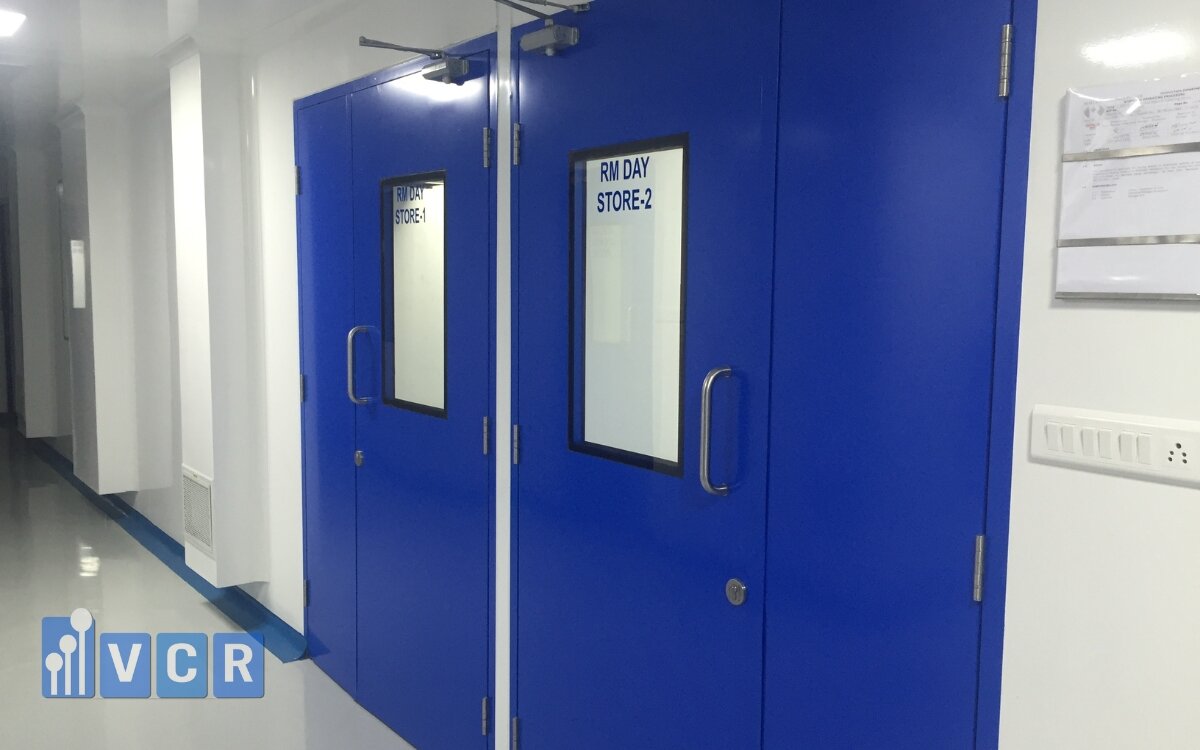
Can I order doors with custom dimensions?
Yes. VCR offers custom-made cleanroom doors based on your exact size requirements, including oversized doors for trolleys or pallets, or special configurations like square doors, view panels, or reinforced aluminum frames. Simply share your layout or measurements for a tailored consultation and quotation.
What is the standard warranty period for cleanroom doors?
Most cleanroom door models from VCR come with a standard 12 to 24-month warranty, depending on the door type, materials, and configuration (motorized, interlock, etc.). VCR also offers preventive maintenance services, accessory replacement, and system recalibration for sensors and locks as needed.
7. Get a Free Quotation & Technical Consultation from VCR Experts
Are you planning to upgrade your cleanroom or build a new electronics factory?
Need a detailed price quote for specific door types or help choosing the right solution that meets ISO & ESD requirements?
VCR's technical team is ready to support you from A to Z:
- Door configuration consulting based on usage zones (SMT, QC, warehouse, airlock…)
- Providing detailed technical drawings and specifications for compliance assessments
- Designing interlock systems, pressure sensors, and access control solutions
Contact us now to receive your quotation and technical documents:
Hotline: 090.123.9008
Email: [email protected]
Website: https://cuaphongsachvcr.com/
Diep VCR




